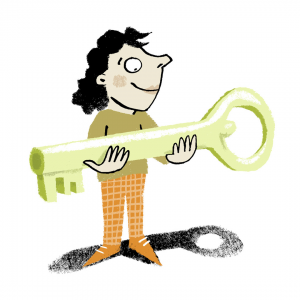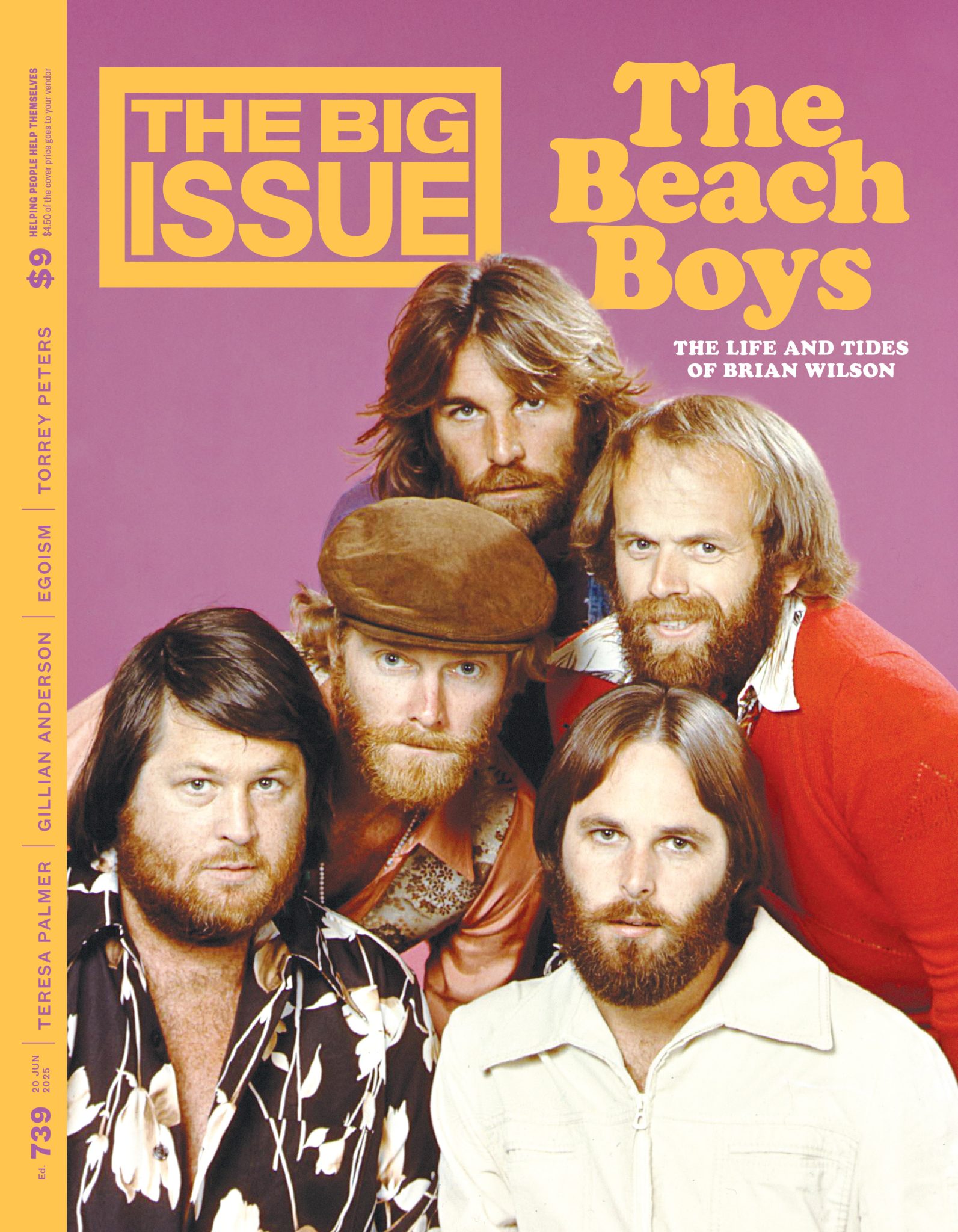In the face of coronavirus, thousands of rough sleepers have been provided temporary housing. As Katherine Smyrk discovers, the crisis presents the opportunity for even bigger change for more than 116,000 Australians experiencing homelessness.
Tukuf can remember it clearly. It was a Friday in early March, just past eight in the morning. He was in Melbourne’s Flagstaff Gardens, where he has been sleeping for a few years now. A woman pulled up in a red car, came over to him and another man who was sleeping rough in the area, and asked them if they would like some accommodation. Less than half an hour later, it had all been sorted – two weeks in a motel, paid up by the government.
“I couldn’t believe it,” says Tukuf, who has been a Big Issue vendor since 2003. “I thought it was a dream or something.” The funding was soon extended and Tukuf is still staying in his room when we speak – a little bit bored, but enjoying the safety and comfort.
“It was a really good change when I moved in here,” he says. “I’ve got my own toilet; I can shower when I like. It’s got a TV on the wall and a DVD player. It’s really good.”
When COVID-19 arrived on Australian shores, there was deep concern for what would happen to disadvantaged people in the community, particularly those sleeping rough. As a Victorian Council of Social Service report put it: “People who are homeless or transient, and people living in poor quality housing, are more vulnerable at all stages of a disaster – before, during, and after it strikes.”
Different state and territory governments reacted in different ways, but one widespread course of action was to move rough sleepers into hotel and motel rooms that had been left empty by the sudden absence of travellers.
It’s estimated that about 7000 people around the country have been housed since March.
“Our response, with government support, was to quickly put people through into emergency accommodation, hotels and motels, and to keep them there for as long as possible,” explains Bevan Warner, CEO of Launch Housing. “Because a) there was the threat of community transmission, but b) because it’s the right thing to do, isn’t it? People can’t self-isolate in the absence of a home.”
He describes those first weeks as “organised chaos”, where they were just responding as best they could to the crisis. They got people housed, and tried to help with the whiplash of the new circumstances.
“Staying in emergency accommodation is hard,” says Warner. “It’s just better than having no accommodation.”
As the dust settled a little, Launch went back and did vulnerability assessments, working to ensure people were getting the support they needed. And there are some real positives to having people in one place, safe and accessible.
“A lot of our clients are getting some of their primary health needs met for the first time,” says Warner. “Some are taking advantage of the stability to activate reconnections with family, or employment, or training, or dentistry.”
He says the main aim, though, is to use this opportunity to try to migrate people into more permanent accommodation.
“We have a wonderful opportunity to not only provide the services that they need, but also to pull them straight through to a permanent housing option, so they don’t have to live a life of uncertainty, not knowing where they’re going to sleep or how they’re going to be safe tonight,” explains Warner. “The grand plan would be a permanent housing exit for everyone.”
When the virus first started to rear its head, Brisbane Big Issue vendor Les wasn’t too worried about his health, but he was worried about the closure of public toilets. He was living on the street, and used to shower every day at his gym. But that had closed, too. When he was offered a hotel room in the city he jumped at the chance. He stayed there for three months.
“It was too good to be true. It even had a laundry, a dryer, a dishwasher; I was cooking a lot. And I could charge all my stuff,” he says.
When his time at the hotel came to an end, he was offered a room in empty student apartments in inner suburb Toowong. “It’s really small, but it fits me good,” he says. He can stay in the apartment for up to a year, and caseworkers are trying to find him something more permanent.
Les is back selling The Big Issue in Brisbane, and has been happy to see some of his old regulars: “I just wanted to focus on getting back to work. When I was in the hotel room I was like, Man this is boring, I want to work.”
Homelessness services are desperately hoping to get everyone from emergency accommodation into something more permanent, just like Les. But their resources are already buckling under the weight of the need.
Warner says Launch Housing has seen a 10- to 15-fold increase in demand since COVID-19 hit, without extra staff.
“We’re not coping,” echoes Jenny Smith, Chair of national peak body Homelessness Australia. “Before the pandemic struck we were turning away 253 people a day from our homelessness services across the country, and it would be a great deal more now.” And she predicts things are only going to get worse, as more and more Australians need help.
“It’s only just starting. JobSeeker and JobKeeper and the eviction moratorium and some of the rental concessions have all played an enormous role in staving off disaster for so many families,” she explains. “But we are looking at a very steep cliff face for middle Australia at the end of September if those payments are withdrawn.”
Even before the coronavirus crisis, there was a national shortfall of 200,000 social and affordable homes, with more than 1.5 million Australians living in housing stress – spending more than 30 per cent of their household income on rent or mortgage payments. From April to May, an ANU study found that the number of people unable to meet their regular housing costs rose from 6.9 per cent to 15.1 per cent.
Bevan Warner says the increase in unemployment benefits from $40 to $80 a day has been monumental, enabling recipients to resolve debt, pay bills and get their heads above water.
“I think it’s well established that Newstart was not even a survival payment,” he says. “For a brief period of time, people who were experiencing homelessness have suddenly had a little bit more money in their pocket and the safety of a bed and a bathroom.”

The day before we spoke, Tukuf was given a letter saying his stay at the motel would come to an end on 31 July. It’s unclear if that will change now Melbourne has gone back into lockdown. He’s anxious to get back to work; in the meantime he’s staying inside as much as possible. Smith has seen this “terrible uncertainty” all around the country.
“People are wondering which day it is that their stay will come to an end,” she says. “They’ve come in from the cold, they already know what the options are for them out of the hotels, which is not very much. In the end, we’ll just keep going round and round with people experiencing homelessness, unless we build or provide more homes that they can afford.”
Warner believes that, perhaps for the first time in a while, there is wider community support for investment in social solutions. He points to an Essential Poll in May, which found that there has been a 21 per cent increase in positive feelings towards people experiencing homelessness since COVID-19.
“There’s been a reckoning in the general community about job security, economic security, housing security; whether it’s for themselves, or their loved ones, or their neighbours, or their colleagues. Everyone knows someone who’s lost their job, or whose business has closed,” says Warner. “And I think that translates to maybe a bit more generosity of spirit for people who are without a home. The virus reminded everyone that our own health is intimately connected to the health of the person next to us, and that everyone needs shelter.”
But without more affordable housing, the options are limited for the 116,000-plus Australians experiencing homelessness every night.
“As a country, we still have the potential for a different response to homelessness than we’ve had in a long time,” says Smith. “The most sensible stimulus for our community in all sorts of ways is to spend money on social housing. We saw that after the global financial crisis, we saw it after the Second World War: it is a time when governments recognise that they do need to spend money on things that are going to stimulate the economy.”
As well as long-term plans to build more affordable housing, organisations are calling on all levels of government to rapidly acquire existing housing and make it available for the most vulnerable right now.
“Hotels are not a home,” says Smith. “It’s been a fantastic response, but it has been a health response, and we need to translate that into a humanitarian response. We have to spend money as stimulus to solve this homelessness problem. Now is the perfect time to do it.”
Warner is hopeful that increased community awareness and support could convince government that affordable housing is something worth investing in.
“Before we had a health crisis we had a housing crisis. That hasn’t gone away. We need to aim higher, and not concede that a certain level of homelessness is inevitable. Because if it’s inevitable, it’s therefore tolerable,” says Warner. “Lots of people have been saying it, but we don’t want to waste a crisis, do we?”
Meanwhile, people are working hard to find a place for Tukuf to stay after July. It’s likely to be a rooming house, and he says that’s better than nothing. But for now, he’s just appreciating what he has.
“The virus is so horrible, but before this I was getting Centrelink and living homeless down by the tram stop,” he says. “And now I’m living in a motel, I’m getting an extra $550 a fortnight, and it’s just been completely different to what it was. I don’t know how to explain it. A big change.”
Written by Katherine Smyrk, former Deputy Editor of The Big Issue.
| This piece has been nominated for a Victorian Homelessness Media Award for Best Feature/Longform Journalism. The Council to Homeless Persons is the Victorian peak body for homelessness. |
|---|
First published in Edition #616.
Illustration by Michel Streich.
